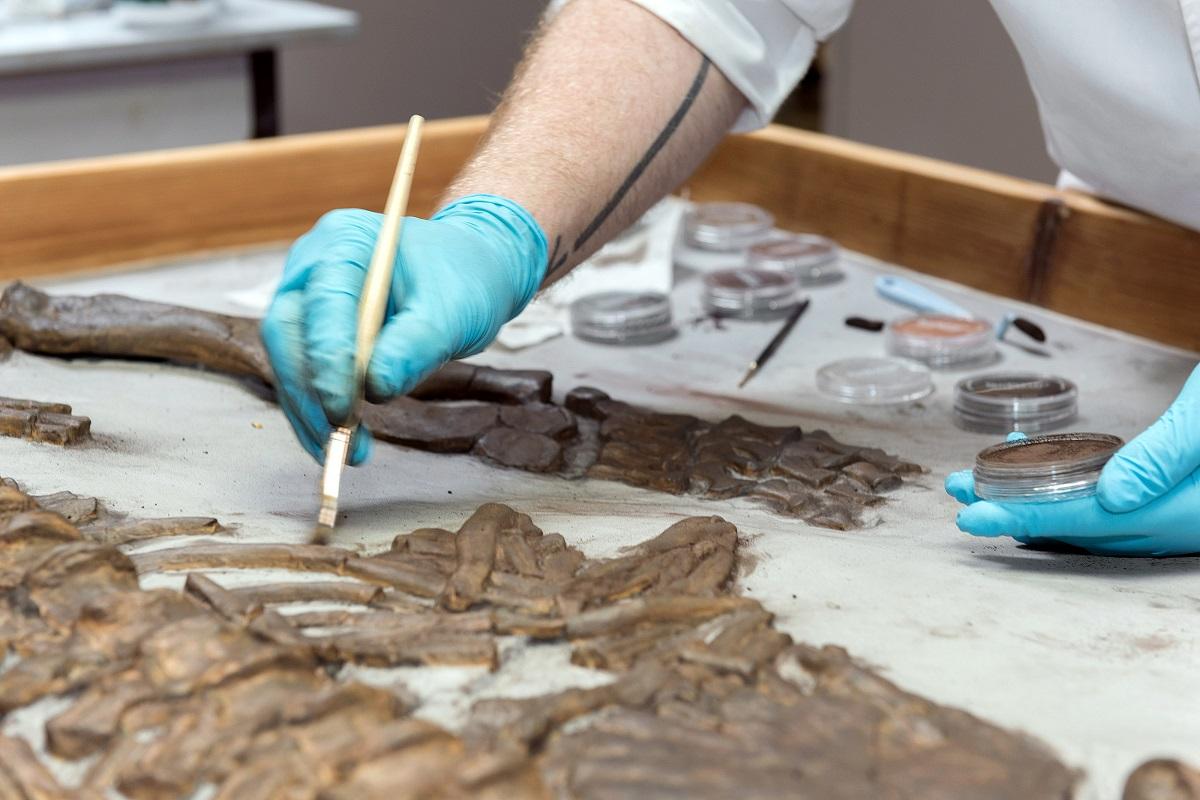Know-how and space: In the palaeontological preparation laboratories, fossils, i.e. petrified remains of plants, animals and tracks, are processed. The material comes from the museum's collections, excavations by researchers or on loan from other natural history institutions. In many cases, preparation is guided by current scientific questions work, but the work programme also includes ongoing restoration and conservation tasks for the collection and exhibition. In addition to mechanical and chemical preparation, castings of certain fossils are also made in the laboratories in order to be able to work with copies of the valuable original pieces. Fossils are also prepared and packaged for analysis. The employees of the palaeontological preparation laboratories are in constant exchange with the palaeontological collections, scientists and students, the computer tomography laboratory, the mineralogical preparation laboratory and the exhibition preparation.
Equipment:
Five preparation workstations with pneumatic stylus, Enseka fine grinding machines and stereomicroscopes
These workstations are used for the mechanical fine preparation of fossils and are individually assigned to the preparators.
Two preparation workstations with fine blasting equipment (Paleotek, Hasenfratz)
Two workstations with blasting boxes are available for the mechanical processing of fossils with the aid of fine blasters. Depending on the nature of the sediment, corundum, iron, dolomite, sodium hydrogen carbonate or nut shells can be used for blasting.
Three rock saws (Kaufmann-Titan type 9334003, Row Rathenow, Woco 50)
The rock saws are used for coarse and fine sawing, for example, to cut large blocks to size as needed to prepare samples for thin sections, grindings or peels.
Large multifunctional room
For work on large objects, e.g. from dinosaurs or large mammals, various tools, aids (electric lift truck, trolley, etc.) and extraction facilities are available. The work includes the production of casts, preparation, impregnation, lamination with synthetic resins for stabilization, coloration, and processing of expedition material as well as wood and metal work on historical objects.
In addition, the multifunctional room offers a workstation for casting technology (silicones, latex, epoxy resins, polyester resins, gypsum, etc.), two tripod microscopes for large objects, an extraction hood for work with chemicals, a camera microscope with live transmission option for teaching and documentation purposes (Leica S9i) and various storage facilities for fossils and working material.
Applications:
A lot of the material processed for research projects in the palaeontological research laboratories comes from expeditions: ammonites from the Devonian of Morocco, amphibian remains from permo-triassic sediments of Siberia, fossil mammal remains from the Pliocene of Sudan, Cenozoic reptiles and whale bones from Iran. Unprepared fossil material from the museum's collections is also further processed for research purposes. An example of this are the dinosaur fossils of the German Tendaguru expedition of 1909-1913, the processing of which has not yet been completed.
